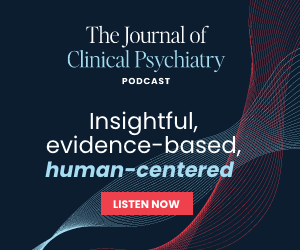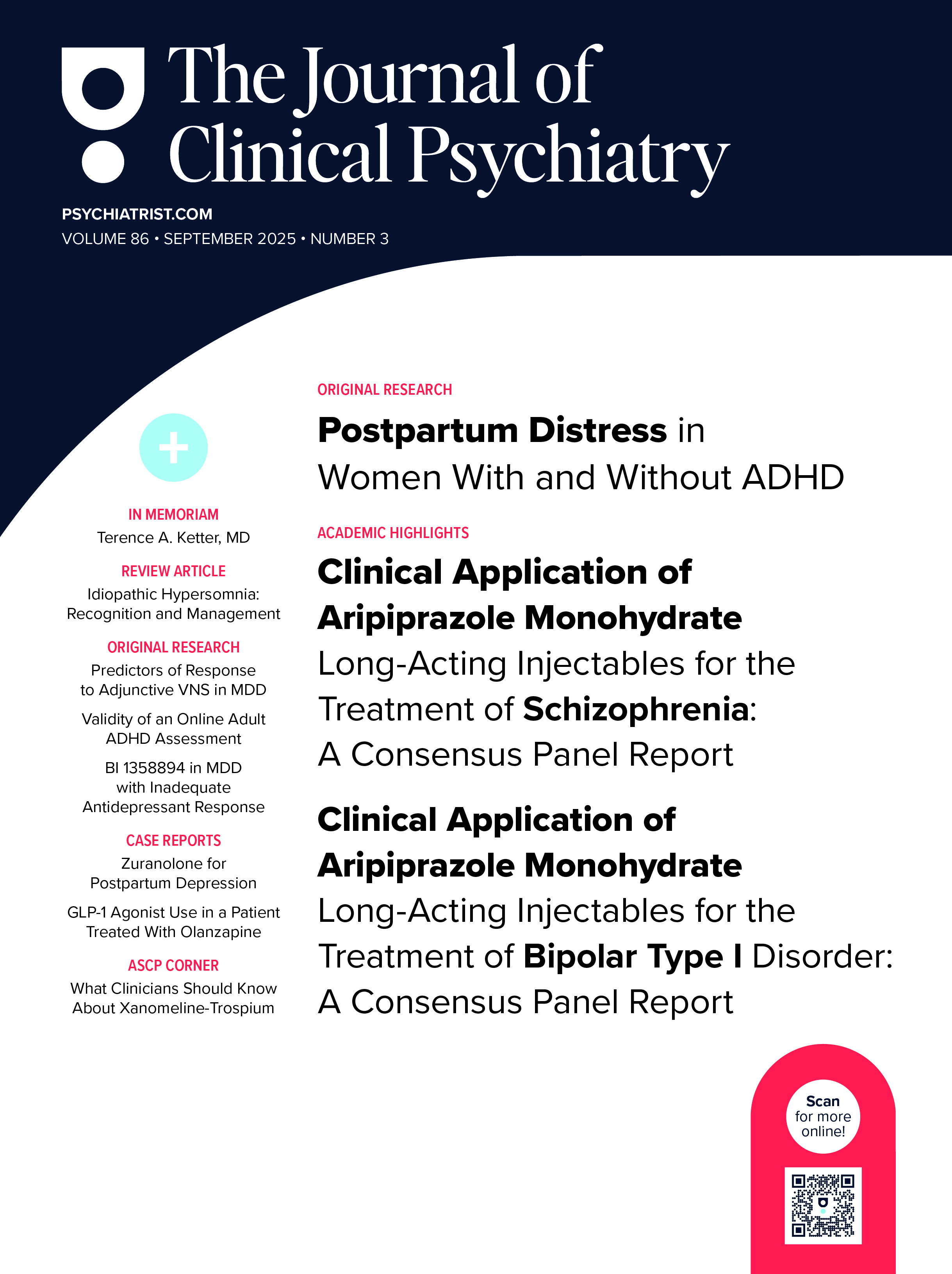ABSTRACT
Background: Because the behavioral variant of frontotemporal dementia (bvFTD) shows major clinical overlap with primary psychiatric disorders (PPD) that affect similar neuroanatomical circuits, a common genetic vulnerability between FTD and PPD was hypothesized.
Aims: We studied whether PPD are more prevalent in families of patients with sporadic frontotemporal dementia compared with healthy controls (HC), subjects with Alzheimer’s disease (AD), and individuals with bipolar disorder (BD).
Methods: In this case-control study performed between January 2013 and February 2019, we investigated the first-degree family history concerning depression, psychosis (including schizophrenia), BD, and autism spectrum disorder for 73 bvFTD patients, 153 patients with BD, 108 patients with AD, and 101 HC with a semistructured questionnaire (QFTD-NL 1.0) according to DSM-IV, DSM-5, or ICD-10 criteria.
Results: Patients with bvFTD had a 2.58-fold higher odds of having a first-degree family member with depression compared to HC (P = .04). Furthermore, they showed 3.26-fold higher odds of having a first-degree relative with psychosis compared to HC (P = .09).
Conclusions: Our results implicate a link between dementia, including sporadic bvFTD, and depression. Further study into the genetic overlap between bvFTD and PPD might provide clues to targeting common disease mechanisms.
Members Only Content
This full article is available exclusively to Professional tier members. Subscribe now to unlock the HTML version and gain unlimited access to our entire library plus all PDFs. If you’re already a subscriber, please log in below to continue reading.
References (55)

- Ducharme S, Dols A, Laforce R, et al. Recommendations to distinguish behavioural variant frontotemporal dementia from psychiatric disorders. Brain. 2020;143(6):1632–1650. PubMed CrossRef
- Rascovsky K, Hodges JR, Knopman D, et al. Sensitivity of revised diagnostic criteria for the behavioural variant of frontotemporal dementia. Brain. 2011;134(Pt 9):2456–2477. PubMed CrossRef
- Woolley JD, Khan BK, Murthy NK, et al. The diagnostic challenge of psychiatric symptoms in neurodegenerative disease: rates of and risk factors for prior psychiatric diagnosis in patients with early neurodegenerative disease. J Clin Psychiatry. 2011;72(2):126–133. PubMed CrossRef
- Mendez MF, Lauterbach EC, Sampson SM; ANPA Committee on Research. An evidence-based review of the psychopathology of frontotemporal dementia: a report of the ANPA Committee on Research. J Neuropsychiatry Clin Neurosci. 2008;20(2):130–149. PubMed CrossRef
- Harciarek M, Cosentino S. Language, executive function and social cognition in the diagnosis of frontotemporal dementia syndromes. Int Rev Psychiatry. 2013;25(2):178–196. PubMed CrossRef
- Piguet O, Hodges JR. Behavioural-variant frontotemporal dementia: an update. Dement Neuropsychol. 2013;7(1):10–18. PubMed CrossRef
- Baez S, Herrera E, Villarin L, et al. Contextual social cognition impairments in schizophrenia and bipolar disorder. PLoS One. 2013;8(3):e57664. PubMed CrossRef
- Weightman MJ, Air TM, Baune BT. A review of the role of social cognition in major depressive disorder. Front Psychiatry. 2014;5:179. PubMed CrossRef
- Devenney EM, Ahmed RM, Halliday G, et al. Psychiatric disorders in C9orf72 kindreds: study of 1,414 family members. Neurology. 2018;91(16):e1498–e1507. PubMed CrossRef
- Yu K, Cheung C, Leung M, et al. Are bipolar disorder and schizophrenia neuroanatomically distinct? an anatomical likelihood meta-analysis. Front Hum Neurosci. 2010;4:189. PubMed CrossRef
- van Erp TGM, Walton E, Hibar DP, et al; Karolinska Schizophrenia Project. Cortical brain abnormalities in 4,474 individuals with schizophrenia and 5,098 control subjects via the enhancing neuro imaging genetics through meta analysis (ENIGMA) consortium. Biol Psychiatry. 2018;84(9):644–654. PubMed CrossRef
- Hibar DP, Westlye LT, van Erp TG, et al; Costa Rica/Colombia Consortium for Genetic Investigation of Bipolar Endophenotypes. Subcortical volumetric abnormalities in bipolar disorder. Mol Psychiatry. 2016;21(12):1710–1716. PubMed CrossRef
- van Rooij D, Anagnostou E, Arango C, et al. Cortical and subcortical brain morphometry differences between patients with autism spectrum disorder and healthy individuals across the lifespan: results from the ENIGMA ASD Working Group. Am J Psychiatry. 2018;175(4):359–369. PubMed CrossRef
- Luo C, Hu N, Xiao Y, et al. Comparison of gray matter atrophy in behavioral variant frontal temporal dementia and amyotrophic lateral sclerosis: a coordinate-based meta-analysis. Front Aging Neurosci. 2020;12:14. PubMed CrossRef
- Radonjić NV, Hess JL, Rovira P, et al. Structural brain imaging studies offer clues about the effects of the shared genetic etiology among neuropsychiatric disorders. Mol Psychiatry. 2021;26(6):2101–2110. PubMed CrossRef
- Anttila V, Bulik-Sullivan B, Finucane HK, et al; Brainstorm Consortium. Analysis of shared heritability in common disorders of the brain. Science. 2018;360(6395):eaap8757. PubMed
- Seelaar H, Kamphorst W, Rosso SM, et al. Distinct genetic forms of frontotemporal dementia. Neurology. 2008;71(16):1220–1226. PubMed CrossRef
- Khan BK, Yokoyama JS, Takada LT, et al. Atypical, slowly progressive behavioural variant frontotemporal dementia associated with C9ORF72 hexanucleotide expansion. J Neurol Neurosurg Psychiatry. 2012;83(4):358–364. PubMed CrossRef
- Ducharme S, Bajestan S, Dickerson BC, et al. Psychiatric presentations of C9orf72 mutation: what are the diagnostic implications for clinicians? J Neuropsychiatry Clin Neurosci. 2017;29(3):195–205. PubMed CrossRef
- Mendez MF. Manic behavior and asymmetric right frontotemporal dementia from a novel progranulin mutation. Neuropsychiatr Dis Treat. 2018;14:657–662. PubMed CrossRef
- Galimberti D, Dell’Osso B, Altamura AC, et al. Psychiatric symptoms in frontotemporal dementia: epidemiology, phenotypes, and differential diagnosis. Biol Psychiatry. 2015;78(10):684–692. PubMed CrossRef
- Zhang FF, Peng W, Sweeney JA, et al. Brain structure alterations in depression: psychoradiological evidence. CNS Neurosci Ther. 2018;24(11):994–1003. PubMed CrossRef
- Briggs R, Carey D, Claffey P, et al. The association between frontal lobe perfusion and depressive symptoms in later life. Br J Psychiatry. 2019;214(4):230–236. PubMed CrossRef
- Dols A, Rhebergen D, Beekman A, et al. Psychiatric and medical comorbidities: results from a bipolar elderly cohort study. Am J Geriatr Psychiatry. 2014;22(11):1066–1074. PubMed CrossRef
- van der Flier WM, Scheltens P. Amsterdam dementia cohort: performing research to optimize care. J Alzheimers Dis. 2018;62(3):1091–1111. PubMed CrossRef
- McKhann GM, Knopman DS, Chertkow H, et al. The diagnosis of dementia due to Alzheimer’s disease: recommendations from the National Institute on Aging-Alzheimer’s Association workgroups on diagnostic guidelines for Alzheimer’s disease. Alzheimers Dement. 2011;7(3):263–269. PubMed CrossRef
- American Psychiatric Association. Diagnostic Criteria of the DSM-IV-TR, Dutch Translation. Lisse, The Netherlands: Swets en Zeitlinger; 2001.
- Öijerstedt L, Chiang HH, Björkström J, et al. Confirmation of high frequency of C9orf72 mutations in patients with frontotemporal dementia from Sweden. Neurobiol Aging. 2019;84:241.e21–241.e25. PubMed CrossRef
- Van Mossevelde S, van der Zee J, Cruts M, et al. Relationship between C9orf72 repeat size and clinical phenotype. Curr Opin Genet Dev. 2017;44:117–124. PubMed CrossRef
- Galimberti D, Reif A, Dell’osso B, et al. C9ORF72 hexanucleotide repeat expansion is a rare cause of schizophrenia. Neurobiol Aging. 2014;35(5):1214.e7–1214.e10. PubMed CrossRef
- Galimberti D, Reif A, Dell’Osso B, et al. C9ORF72 hexanucleotide repeat expansion as a rare cause of bipolar disorder. Bipolar Disord. 2014;16(4):448–449. PubMed CrossRef
- Leverich GS, Nolen WA, Rush AJ, et al. The Stanley Foundation Bipolar Treatment Outcome Network, I: longitudinal methodology. J Affect Disord. 2001;67(1-3):33–44. PubMed CrossRef
- Hill WD, Davies G, Liewald DC, et al; CHARGE Cognitive Working Group. Age-dependent pleiotropy between general cognitive function and major psychiatric disorders. Biol Psychiatry. 2016;80(4):266–273. PubMed CrossRef
- Lavoie MA, Plana I, Bédard Lacroix J, et al. Social cognition in first-degree relatives of people with schizophrenia: a meta-analysis. Psychiatry Res. 2013;209(2):129–135. PubMed CrossRef
- Bo Q, Dong F, Li X, et al. Comparison of cognitive performance in bipolar disorder, major depressive disorder, unaffected first-degree relatives, and healthy controls. Psychiatry Clin Neurosci. 2019;73(2):70–76. PubMed CrossRef
- Kuring JK, Mathias JL, Ward L. Prevalence of depression, anxiety and PTSD in people with dementia: a systematic review and meta-analysis. Neuropsychol Rev. 2018;28(4):393–416. PubMed CrossRef
- Herbert J, Lucassen PJ. Depression as a risk factor for Alzheimer’s disease: genes, steroids, cytokines and neurogenesis—what do we need to know? Front Neuroendocrinol. 2016;41:153–171. PubMed CrossRef
- Broce I, Karch CM, Wen N, et al; International FTD-Genomics Consortium. Immune-related genetic enrichment in frontotemporal dementia: an analysis of genome-wide association studies. PLoS Med. 2018;15(1):e1002487. PubMed CrossRef
- Yokoyama JS, Bonham LW, Sturm VE, et al. The 5-HTTLPR variant in the serotonin transporter gene modifies degeneration of brain regions important for emotion in behavioral variant frontotemporal dementia. Neuroimage Clin. 2015;9:283–290. PubMed CrossRef
- Harciarek M, Malaspina D, Sun T, et al. Schizophrenia and frontotemporal dementia: shared causation? Int Rev Psychiatry. 2013;25(2):168–177. PubMed CrossRef
- Cooper JJ, Ovsiew F. The relationship between schizophrenia and frontotemporal dementia. J Geriatr Psychiatry Neurol. 2013;26(3):131–137. PubMed CrossRef
- Kennedy DP, Adolphs R. The social brain in psychiatric and neurological disorders. Trends Cogn Sci. 2012;16(11):559–572. PubMed CrossRef
- Schoder D, Hannequin D, Martinaud O, et al. Morbid risk for schizophrenia in first-degree relatives of people with frontotemporal dementia. Br J Psychiatry. 2010;197(1):28–35. PubMed CrossRef
- Moreno-Küstner B, Martín C, Pastor L. Prevalence of psychotic disorders and its association with methodological issues: a systematic review and meta-analyses. PLoS One. 2018;13(4):e0195687. PubMed CrossRef
- Lyall K, Croen L, Daniels J, et al. The changing epidemiology of autism spectrum disorders. Annu Rev Public Health. 2017;38(1):81–102. PubMed CrossRef
- Sullivan PF, Daly MJ, O’Donovan M. Genetic architectures of psychiatric disorders: the emerging picture and its implications. Nat Rev Genet. 2012;13(8):537–551. PubMed CrossRef
- Oberman LM, Pascual-Leone A. Hyperplasticity in autism spectrum disorder confers protection from Alzheimer’s disease. Med Hypotheses. 2014;83(3):337–342. PubMed CrossRef
- Smoller JW, Finn CT. Family, twin, and adoption studies of bipolar disorder. Am J Med Genet C Semin Med Genet. 2003;123C(1):48–58. PubMed CrossRef
- Dols A, Krudop W, Möller C, et al. Late life bipolar disorder evolving into frontotemporal dementia mimic. Neuropsychiatr Dis Treat. 2016;12:2207–2212. PubMed CrossRef
- Mendez MF, Parand L, Akhlaghipour G. Bipolar disorder among patients diagnosed with frontotemporal dementia. J Neuropsychiatry Clin Neurosci. 2020;32(4):376–384. PubMed CrossRef
- Merikangas KR, Jin R, He JP, et al. Prevalence and correlates of bipolar spectrum disorder in the world mental health survey initiative. Arch Gen Psychiatry. 2011;68(3):241–251. PubMed CrossRef
- Nascimento C, Nunes VP, Diehl Rodriguez R, et al. A review on shared clinical and molecular mechanisms between bipolar disorder and frontotemporal dementia. Prog Neuropsychopharmacol Biol Psychiatry. 2019;93:269–283. PubMed CrossRef
- van Swieten JC, Heutink P. Mutations in progranulin (GRN) within the spectrum of clinical and pathological phenotypes of frontotemporal dementia. Lancet Neurol. 2008;7(10):965–974. PubMed CrossRef
- Pottier C, Ravenscroft TA, Sanchez-Contreras M, et al. Genetics of FTLD: overview and what else we can expect from genetic studies. J Neurochem. 2016;138(suppl 1):32–53. PubMed CrossRef
- Scarioni M, Gami-Patel P, Timar Y, et al; Netherlands Brain Bank. Frontotemporal dementia: correlations between psychiatric symptoms and pathology. Ann Neurol. 2020;87(6):950–961. PubMed CrossRef





